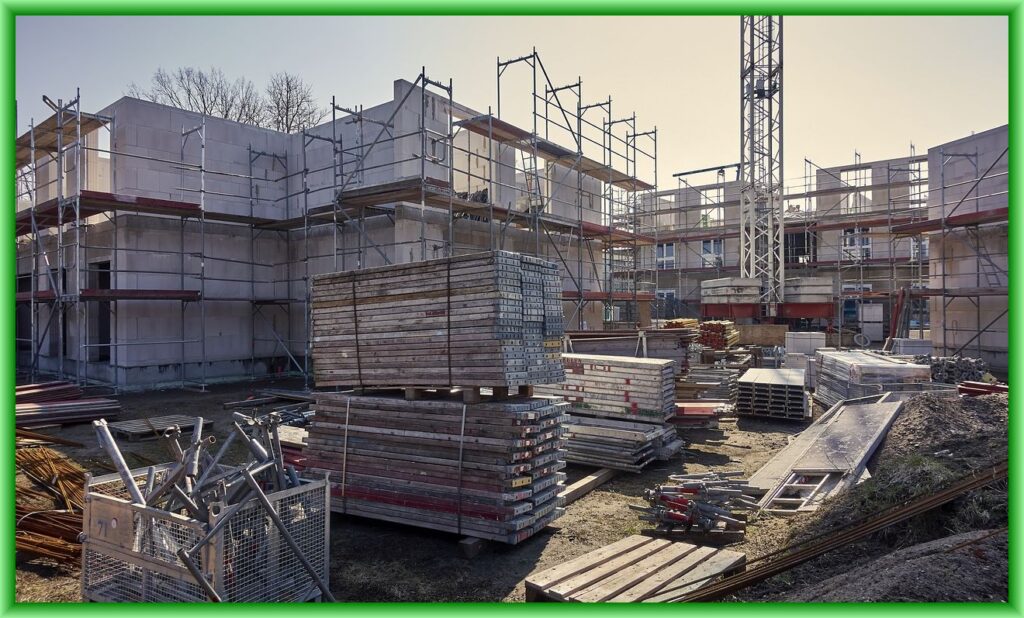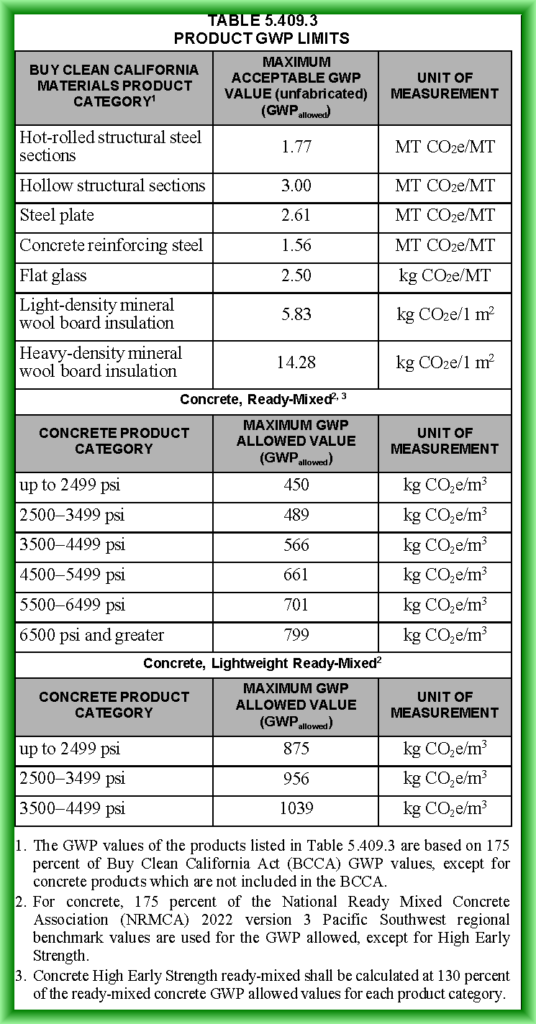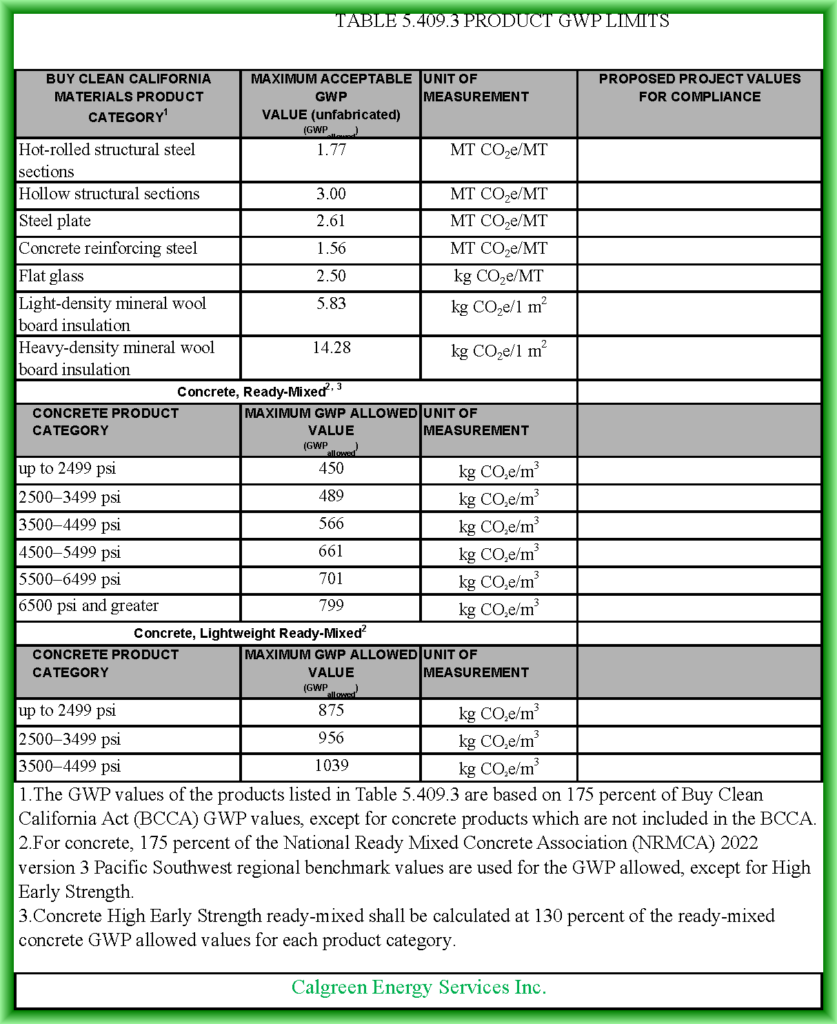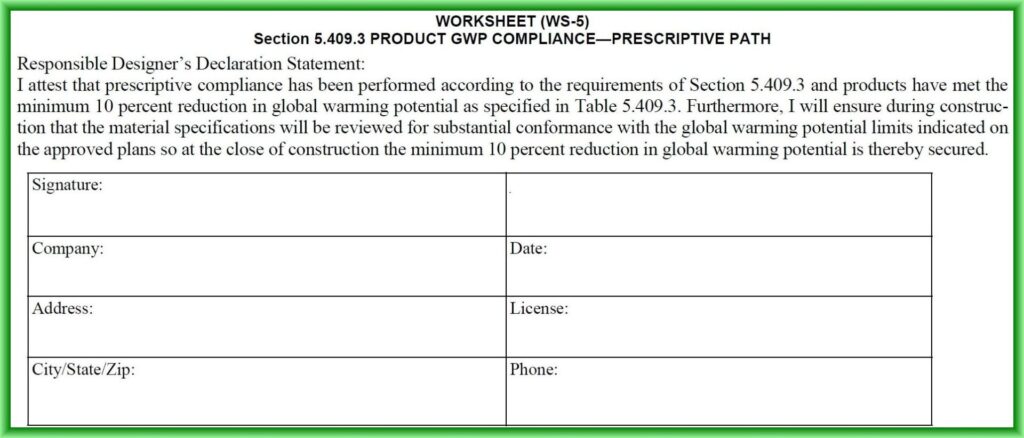CalGreen and Embodied Carbon
CalGreen and Embodied Carbon
As I sit down to write this article a part of me wants to scream, “enough is enough of costly green building regulations in California!”
A part of me believes there are too many “Green” organizations whose sole purpose is to generate never-ending green-washing ideas to justify their own existence.
A part of me believes that too many politicians do not perform their proper due diligence when it comes to supporting these never-ending Green code amendments.
A part of me thinks California is carrying the burden of carbon reduction while the other forty-nine states reap the economic benefits of ignoring the issue.
However, since the lunatics are now running the asylum (aka the California Energy Commission), I am forced to deal with insanity along with the architects, engineers, contractor’s and developers in the green-washed State of California.
After 40 years in this industry, a part of me wishes I picked another career path.
Rant over. Moving on.
My hope here is to help the reader avoid going down the rabbit hole on embodied carbon. The Google has so much nonsense on this subject it can make your head spin.
This article will boil this subject down to what you need to know for you building permit application.
What in Hell is Embodied Carbon???
Embodied Carbon: The greenhouse gas emissions arising from the manufacturing, transportation, installation, maintenance, and disposal of building materials.
This is in contrast to operational carbon which refers to the greenhouse gas emissions due to building energy consumption.
Greenhouse gas emissions, and their potential effects on climate change, are calculated using a life cycle assessment (LCA). These emissions are converted into metrics that reflect their potential effects on the environment.
One of these metrics is global warming potential (GWP), which is quantified in kilograms of CO2 equivalent (kg CO2e). This quantity is also commonly referred to as a carbon footprint (or “carbon cash-cow” for some…)

Carbon Based Construction Materials
Legislative Enactment of Embodied Carbon Measures
In September of 2022 Assembly Bill 2446 was enacted. The bill required the California Air Resources Board (CARB) to develop a means for reducing the embodied carbon of building construction materials. This typically occurs at the materials production stage and delivery to the project site.
The goal is to achieve a 40 percent reduction in GHG emissions no later than the end of 2035. A secondary goal is an interim target of a 20 percent reduction by the end of 2030. (In 2010 California had a target of Zero Net Energy by 2020…we’re still waiting for that one.)
These new code requirements are set to go into effect at the 2022 Intervening Code Cycle of the California Green Building Standards. This will become a state code requirement as of July 1, 2024.
Architect’s and Embodied Carbon
The new CalGreen Code Embodied Carbon requirements apply to new commercial buildings that are over 100,000 square feet. School buildings over 50,000 square feet are also included.
Residential projects are excluded, except possibly mixed-use projects that include both residential and commercial occupancies.
The mandatory measures are divided into two categories. (Note that there are two more categories that apply to Tier 1 and Tier 2 projects which are beyond the scope of this discussion).
The 2022 interim CalGreen Code changes provide two paths for new building compliance. You have the option of performing a software analysis (LCA) of the affected building components, or you can select materials that are documented to meet the minimum requirements (aka Prescriptive Path).
1. Existing Structures 100,000 square feet or greater (until January 1, 2026, then this applies to projects 50,000 sq. ft. or greater):
CG 5.105.2 Reuse of existing building: An alteration or addition to an existing building shall maintain at a minimum 45 percent combined of the existing building’s primary structural elements (foundations; columns, beams, walls, and floors; and lateral elements) and existing building enclosure (roof framing, wall framing and exterior finishes).
2. New Residential Buildings 100,000 sq. ft. or larger:
CG 5.409.2 Whole Building Life Cycle Assessment: Projects shall conduct a cradle-to-grave whole building life cycle assessment performed in accordance with ISO 14040 and ISO 14044, excluding operating energy, and demonstrating a minimum 10-percent reduction in global warming potential (GWP) as compared to a reference baseline building of similar size, function, complexity, type of construction, material specification, and location that meets the requirements of the California Energy Code currently in effect.
CG 5.409.3 Product GWP compliance – Prescriptive Path: Each product that is permanently installed and listed in Table 5.409.3 shall have a Type III environmental product declaration (EPD),
either product-specific or factory-specific.5.409.3.1 Products shall not exceed the maximum GWP
value specified in Table 5.409.3.
The 2022 interim CalGreen Code changes provide two paths for new building compliance.
You have the option of performing a software analysis of affected building components, or you can select materials that are documented to meet the minimum requirements.
This sounds complicated at this point but by the end of the article you will learn the actual compliance is pretty simple.
What Building Products/Materials Are Included?
Under the 2022 interim code update only the following materials are included in the requirements.
• Hot-rolled structural steel sections
• Hollow structural sections
• Steel plate
• Concrete reinforcing steel
• Flat glass
• Light-density mineral wool board insulation
• Heavy-density mineral wool board insulation
• Concrete
Here is the CalGreen Code Table with the specific Requirements.

CalGreen Code Embodied Carbon Limits
What Building Products/Materials Are Included?
Let’s first clarify a few definitions.
EDP stands for Environmental Product Declaration.
An EPD is a verified and registered document that communicates the life-cycle assessment (LCA) of a product based on the product category rules (PCR). A PCR is the document that establishes the rules governing the assumptions and calculations performed in an LCA which are expressed as an EPD. EPDs are sometimes referred to as “nutrition labels for products”. Essentially, the EPD summarizes the product’s carbon footprint.
To find the EPDs for the products on your project contact the individual companies for copies of their official EPD certifications.
It is very important to understand that because a company has an EPD for a product, or the product is LEED rated, it does not mean it meets the California requirements. In fact, my research on popular glazing and other materials suggest many of the “green certified” products do not meet the EPD requirements for California. Architects should exercise their due diligence on this issue early in the project. Specifying incorrect steel, or concrete, for a multi-million dollar project could have serious financial implications. Oversight of your structural engineer will be important if you are the architect of record and are signing the Responsible Designer’s Declaration.
You can learn more about EPD’s here.
LCA stands for Life Cycle Assessment.
A life cycle assessment is the science of quantifying environmental impacts through the entire process of creating, transporting, using, and disposing of a product or material.
Currently there are two free LCA estimator programs recommended by the Building Standards Commission.
Athena Impact Estimator for Buildings
https://calculatelca.com/software/impact-estimator/
One Click LCA Planetary Software
https://www.oneclicklca.com/planetary/

What You Need to do for Permitting
Paragraph 5.409.3.2 of the code supplement explains the documentation requirements and reads as follows.
5.409.3.2 Verification of compliance. Calculations to demonstrate compliance, Type III EPDs for products required to comply, if included in the project, and Worksheet WS-5 signed by the design professional of record shall be provided on the construction documents. Updated EPDs for products used in construction shall be provided to the owner at the close of construction and to the enforcement entity upon request. The enforcing agency may require inspection and inspection reports in accordance with Sections 702.2 and 703.1 during and at completion of construction to demonstrate substantial conformance. Inspection shall be performed by the design professional of record or third party acceptable to the enforcing agency.
In most cases, projects will likely be submitted using the Prescriptive Path for compliance. In this case, the Environmental Product Declarations (EPD) for each of the required products should be clearly listed on the plans.
A basic table, similar to the 5.409.3 table in the code, that indicates the EDPs for the project specific materials would be easy for plan reviewers to verify during permitting. We have created an Excel file that you can use for your projects. The last column is for your projects EDPs. Here is a picture of the table. You can download the Excel file here.

In addition to the listed EDPs the architect of record will also need to sign Worksheet WS-5. This is the responsible designer’s declaration. This documents that the prescriptive compliance has been performed according to the code. This declaration should also appear on your plans. It is suggested to locate this directly below the Prescriptive Path table suggested above. Here is the WS-5 Worksheet. You can download a PDF here.

Responsible Designer’s Declaration
I hope the above has helped you understand the new requirements’ for embodied carbon limits on your project.
I’m sure we’ll all sleep better knowing that carbon has been reduced by some factor, for some reason, based on some data, by some experts, somewhere… (insert sarcastic smiley).
At CalGreen Energy Services we are specialists in the CalGreen Code. CalGreen is our only business. If you have a CalGreen question please feel free to give us a call. We are happy to share our knowledge.
Call us today and let us show you how we can help with your project.
Gary Welch
Email: gary@calgreenenergyservices.com
Phone: 707-328-5299


Gary Welch has over 35 years experience in the field of sustainable building design. He is the CEO of CalGreen Energy Services. Gary is an ICC Certified CalGreen Special Inspector and Plans Examiner.

